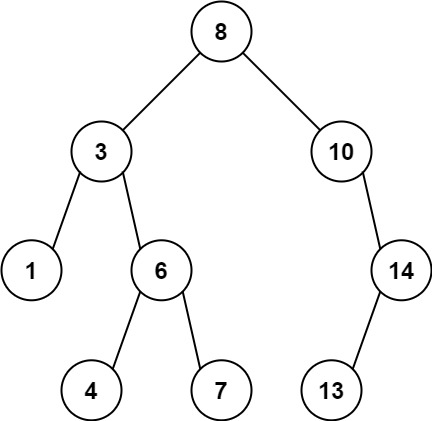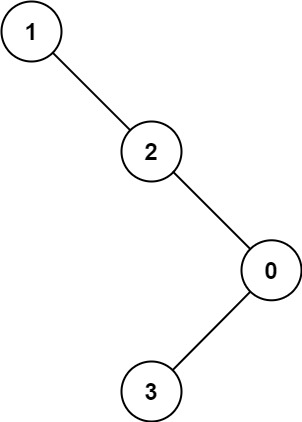Maximum Difference Between Node and Ancestor
Problem Statement - link #
Given the root of a binary tree, find the maximum value v for which there exist different nodes a and b where v = |a.val - b.val| and a is an ancestor of b.
A node a is an ancestor of b if either: any child of a is equal to b or any child of a is an ancestor of b.
Examples #
Example 1:

Input: root = [8,3,10,1,6,null,14,null,null,4,7,13]
Output: 7
Explanation: We have various ancestor-node differences, some of which are given below :
|8 - 3| = 5
|3 - 7| = 4
|8 - 1| = 7
|10 - 13| = 3
Among all possible differences, the maximum value of 7 is obtained by |8 - 1| = 7.
Example 2:

Input: root = [1,null,2,null,0,3]
Output: 3
Constraints #
- The number of nodes in the tree is in the range
[2, 5000]. 1 <= Node.val <= 10^5
Solutions #
/**
* Definition for a binary tree node.
* struct TreeNode {
* int val;
* TreeNode *left;
* TreeNode *right;
* TreeNode() : val(0), left(nullptr), right(nullptr) {}
* TreeNode(int x) : val(x), left(nullptr), right(nullptr) {}
* TreeNode(int x, TreeNode *left, TreeNode *right) : val(x), left(left), right(right) {}
* };
*/
class Solution {
public:
int maxAncestorDiff(TreeNode* root) {
if(!root) return 0;
return rc(root, root->val, root->val);
}
int rc(TreeNode* root, int mn, int mx){
if(!root) return mx-mn;
mx = max(mx, root->val);
mn = min(mn, root->val);
int l = rc(root->left, mn, mx);
int r = rc(root->right, mn, mx);
return max(l, r);
}
};